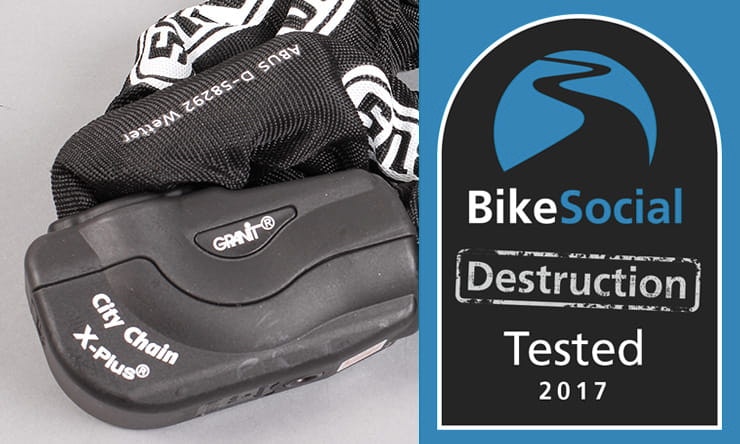Hi guys! I'm moving some content off of the main site and into the most relevant categories of the forum. This post was originally made on February 6th 2017:
When you’ve spend hundreds, possibly thousands of dollars on an electric bike, it’s nice to know what options exist for locking it up. In some city environments, bike theft can be pretty common, but you don’t have to be the weakest link. For this video guide, I worked with Chris Nolte of
Propel Bikes in Brooklyn. New York City is one of those places where bike theft can happen, and apparently they passed laws requiring new buildings to have secure bike parking (such as bike cages with securing cameras) as well as mandating that work places let employees bring their bicycles inside if there is space. In this way, bikes are less exposed to theft and harsh weather, and more people will consider using them to get around, which results in less crowded streets, less noise, and healthier fresher air for everyone. The video below goes in-depth on a number of solutions and I have listed them out by hand in a bulleted list with links to where you can make purchases. Please consider buying these accessories at your local bike shop because it helps them stay in business. For people who want more than just locking solutions, consider bicycle insurance from Velosurance. I have learned that some traditional renters and home owners insurance does not cover motorized products and may otherwise depreciate your bikes and not cover accessories. Velosurance goes above and beyond as far as bikes and electric bikes and I did a video interview with them to learn the details
here if you’re interested.
The following bullets outline solutions that Chris and I spoke about on camera. I repeat some of the key learnings to add clarity and provide a searchable reference point along with links to the actual products online:
- The most common type of higher-level bike locks I have seen in recent years are u-locks. The downside is that they aren’t as compact and easy to store as chains and folding locks, but they are very sturdy and can be purchased in sizes that might fit into a pant pocket or belt. A good u-lock will secure both ends of the curved metal bar and some fancier locks can be keyed alike to match ebike battery locking cylinders and frame locks as discussed in the video. The most common keyed-alike options come from ABUS and AXA. We talked a lot about Plus level ABUS locks in the video because they offer the keyed-alike option (apparently the X-Plus level does not). Your shop could help you with key matching time of purchase. Here’s an example u-lock from Abus at the Plus level.
- Folding locks are a great alternative to u-locks because they can be stored more compactly and offer greater reach and flexibility. Some of the fancier electric bikes will actually come with folding locks, such as the Riese & Müller Delite 25. This is another opportunity to get a keyed-alike lock if your battery interface uses AXA or ABUS. Here’s an example folding lock from ABUS called the Bordo, which has been made in a longer size and features the nice mounting interface holster that could be attached to standard bottle cage bosses.
- Chris told me that he uses three locks in New York City when leaving his bike outside for more than one hour at a time. Yes, this adds some expense and weight, but some of his ebikes cost several thousand dollars. He said that he will carry a u-lock, folding lock, and a chain lock which could be completely independent like this, or could be a chain that interfaces with a frame lock (also called a cafe lock sometimes), like this. The neat thing about cables is that they are flexible, some of the nicer ones can be keyed alike and most of them will have some sort of fabric to protect your frame from being scratched up.
- Chain locks come in different lengths, thicknesses, and also different security levels. You may choose a braided metal cable instead of a chain, or you could get a shorter seat leash cable or chain like this to secure your saddle to your bike frame. This is worth doing if you have a very nice saddle, a suspension seat post, or you have a quick release seat post clamp and are concerned that someone could take your seat even if it’s an inexpensive part.
- So, this brings us to an interesting point, if your seat collar uses quick release and is vulnerable, then your wheels might also be vulnerable if they have quick release skewers! Many companies have introduced locking hardware to replace quick release systems. Some use pitted interfaces with special “key” tools vs. the standard hex wrench pattern. Some examples are Pitlock and Pinhead, but other companies have joined in with more sophisticated bolts that will only unscrew if the bike is on its side, ABUS has their NutFix solution and Kryptonite has one called WheelNutz where you have to flip the bike completely upside down… The idea is that you cannot tip or flip a bike that is properly locked to a bike rack or metal pole, so the wheels and seat post cannot be removed.
- Locking hardware is great, but apparently it is only available for standard 100 mm front skewers and 135 mm rear skewers with 9.8 mm diameter axles… no boost or thicker thru-axles are supported by the mainstream products at this time. Chris explained that this can be overcome by using cable or chain locks, as discussed earlier, and hopefully we will see solutions come about in the future (please post comments below). He did mention something called the Robert Axle Project which might be working on something.
- Cables and locks are great, but we are now seeing smart locks that will call your phone if someone is tampering with them. I saw a GPS solution that will text you and track the location of your bike called the Boomerang. This thing is designed to stand out, blink, and sound an alarm if tampered with. Other companies are following suit with beeping bike alarms. This is an emerging space, but one that makes a lot of sense and I welcome comments below and in the forums about what you see and like.
- One final note that we spoke about was the insurance offered by Kryptonite on some of their locks. Apparently, the fine print says something about non-support if a power tool is used to break the lock… and apparently this is a very common way for thieves to overpower locks. I personally like the idea of using multiple locks, parking in a public area (near a doorman if you’re in a club late at night), and bringing the bike inside overnight. Many ebikes have removable batteries so they can be lifted more easily. Do what it takes to keep your bike safe by knowing your environment, and consider insurance if you’ve spent a lot and know that you live in a high risk area.
View attachment 21332
As always, I welcome comments and feedback about how bike lock and bike security hardware evolves over time. You are also welcome to post in the EBR forums, in the
accessories section along with pictures. I personally use a u-lock and two cables to secure my bike, and have created a separate guide and video
here to show you how I keep all wheels and the saddle secure.



